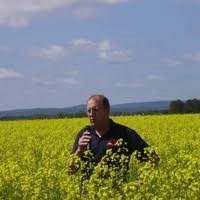Terry Phillips grew up on a farm in the New Liskeard area and played a role in the establishment of the first grain elevator in the region, hastening the transition from beef and dairy farming to cereal crop production.
Overcoming the skepticism and reluctance of farmers-who often see each other as competitors-to open their wallets and work toward a common goal were among the challenges that had to be overcome.“Having some skin the game,”Terry reveals,was key to persuading the province to come through with the required capital.
The grain elevator went into service in 1989.Since then,several others have been built to fill the growing need for drying and storage.
In this interview, Terry opens our eyes to the growing importance of Northern Ontario’s Clay Belt and its potential as a consequence of global warming. Though much of it remains forested, the Greater Clay Belt, stretching from Hearst and Kapuskasing to Cochrane encompasses double the amount of arable land in southern Ontario-some 16million acres.
Thanks to grain elevators, tile drainage, crop insurance and global warming, farmers in northeastern Ontario are now able to grow soybeans, canola, corn and winter wheat–crops they were never able to grow decades ago. Farmers in northeastern Ontario are even exporting fava beans to Egypt and peas to India.
With nine or 10 billion mouths to feed in the world, agriculture is bound to play an increasingly important role in an economy that has traditionally been focused on mining and forestry, especially as the U.S. Midwest becomes too hot and dry to serve as the continent’s breadbasket.
Although vastly underappreciated, agriculture is currently second only to the auto industry in its contribution to Ontario’s economy, according to Terry.And as more farmers take advantage of the less expensive land in northeastern Ontario,the importance of agriculture in the region is bound to grow.
